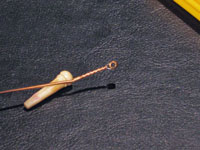
Whether you are a professional
musician or a person who likes to sit around the house and play, taking care of
your guitar is very important. Guitar manufacturers today take great care in
building their products, and they actually handpick different types of wood to
craft an instrument which is visually appealing. This also provides a
resonance that can be unique to the particular type of guitar. This is true of
electric guitars, as well as acoustic guitars. My review will deal with the
care of an electric guitar, but many of the points that I raise will apply to
the acoustic guitar also.
A guitar player should maintain his instrument with two things in mind: first, to preserve the beauty that is inherent in a well-crafted guitar that was built from quality woods, and second, to keep the instrument in the best possible playing condition.
Here are my suggestions for caring for your guitar:
A guitar player should maintain his instrument with two things in mind: first, to preserve the beauty that is inherent in a well-crafted guitar that was built from quality woods, and second, to keep the instrument in the best possible playing condition.
Here are my suggestions for caring for your guitar:
Clean and polish the top, sides and back of your guitar regularly. You can use a top-of-the line furniture polish to apply to your guitar, or your can buy any number of polishes offered by guitar companies specifically for the guitar application. If you establish a regular clean and polish regimen, your guitar will always look good.
The beauty
of the woods will be enhanced, and if you should ever decide to part with your
guitar, it will bring a premium price because of your
efforts.
Dress the frets every time you change
strings. If you play often, a lot of dirt, grime and oils from your hands can
build up on the fret board. This isn't good for the strings and probably affects
the sound also. I use a very soft-bristled toothbrush and a little soapy water,
and I make sure to wipe the fret dry after cleaning. Use this routine when your
change strings and your fret board won't ever have that "soft"
feel.
Wipe down the neck with a dry cloth after
every use to protect your fret board and to prolong string life. Sweat, oils,
dirt and grime can accumulate very quickly, and if you wipe the fret board
frequently, you can make dressing the frets a much simpler task. You will also
prolong string life by removing some of the elements that cause strings to
deteriorate.
Never expose your instrument to
excessive heat or cold for prolonged periods of time. Heat and sunlight can
cause premature finish checking, and can make the finely crafted woods in your
guitar look old and faded almost overnight. Cold weather might not affect the
finish so much, but it can cause damage to binding, inlays and the neck, often
requiring unnecessary work with the truss rod. Guitars need a cool, dry
environment, so try to keep your guitar in that type of
setting.
Protect your guitar when it's stored in
the case. I'm talking about humidity here, and it can be one of the most
insidious enemies to the health of your guitar. You can buy a capsule from your
local guitar store that will stabilize the humidity in the case; just put it in
your case and it will provide the protection that you need.
Regularly check and tighten all screws, strap-pins and tuning
machines. This just makes good sense, because you don't want any unneeded
rattling or jingling when you're playing your instrument, either at a gig or at
home for your own pleasure.
Make it a point to
regularly clean all metal parts of your guitar with a good metal cleaning
compound. Chrome and nickel are notorious for corrosion and tarnish,
particularly in certain environments, so setting up a regimen to clean your
pickup covers, bridge, and tuning buttons will help in maintaining the visual
appeal of your instrument.
Avoid things that can
cause scratches, dings and other scars on your instrument. Don't wear a belt
with a buckle when you have your guitar strapped on; I have seen many beautiful
vintage instruments which have been ruined by belt-buckle scratches on the back.
Also, buy a stand! Never leave your guitar propped up against the wall or your
amplifier-I've seen irreparable damage done to some quality instruments because
they fell from being propped up. Spend the money and buy a stand--consider it an
investment.
At least once a year, carry your
instrument to your local guitar technician for a complete look-over. No matter how well you take care of your
instrument, the truss rod will need adjusting regularly, and the intonation
screws on the pickups will need to be adjusted to ensure that your are getting
the balanced sound that you want from your guitar. Your guitar may need bridge
adjustments also, so it's always good to take it in annually to let the expert
make the fine adjustments that will give you the maximum in
playability.
My last tip-PLAY YOUR GUITAR!!! There is no better way to
keep your guitar in tip-top shape than to play it every day. I have always been
dismayed to see how they "go down" from lack of use. Play your guitar, take
care of it, and it will take care of you.





